List of author's articles

29th Reconnaissance Battalion (motorized)
Aufklärungs-Abteilung (motorisiert) 29 took part in the invasion of the Sudetenland in 1938 and Czechoslovakia in 1939. From 1 September 1939 it participated in the Polish campaign and from 10 May 1940 in the Western campaign. In early June 1941, the battalion moved by rail to the area east of Warsaw to prepare for the Russian campaign. From November 1941 it took part in the advance on Moscow.
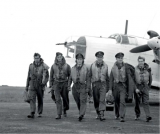
407. Squadron RCAF
The Royal Canadian Air Force (RCAF) played an important role in the defeat of Germany during the war. No. 407 was the second Canadian unit in Coastal Command and spent its entire service career on maritime patrol.

500. squadron RAF
During the Second World War, the squadron served in both Coastal Command and Bomber Command. In the coastal role, the squadron undertook operations over the English Channel in 1940–1941, before moving to North Africa in late 1942. It undertook anti-submarine operations in support of Operation Torch and then continued operations in the Mediterranean, operating various aircraft types during this period. In July 1944, the squadron disbanded before being reformed as a bomber squadron in Algeria in August, later operating in Italy in the final years of the war.

8th Air Army raid on Münster in October 1943
Lieutenant Robert Sabel was trying to bring his Fortress "Rusty Lode" home. Eight B-17s from his 390th Bombardment Group had already been shot down. Sabel's plane was riddled with flak and shell holes, two engines had been knocked out and the fuel gauges showed only two minutes of fuel left in his tank. Three of the crew had been rescued in parachutes over Germany, four others lay dead in the bomber. Even a return to England was highly unlikely. Then he saw the runway just ahead...

American submarines in the Pacific
The Tambor-class submarines with which the US Navy went to war were fast enough and far-reaching to become submarines to be deployed throughout the fleet, according to naval planners. But they never had the opportunity to prove their qualities.
The attack on Pearl Harbor changed everything. From December 7, 1941, the US Navy again learned how to use its fleet of submarines. Because there was no war fleet, submarines were currently the only naval offensive weapon available. They were sent with an instruction to dive anything anytime.

Armies in the Pacific War 1879-1883
The War of the Pacific, also known as the Saltpeter War and by multiple other names, was a war between Chile and a Bolivian–Peruvian alliance from 1879 to 1884. Fought over Chilean claims on coastal Bolivian territory in the Atacama Desert, the war ended with a Chilean victory, which gained for the country a significant amount of resource-rich territory from Peru and Bolivia. The Chilean Army took Bolivia's nitrate-rich coastal region, and Peru was defeated by the Chilean Navy.
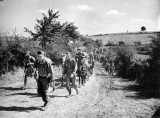
Balkan Air Rescue
Operation Halyard, known in Serbian as Operation Air Bridge, was an Allied airlift operation behind Axis lines during World War II. In July 1944, the Office of Strategic Services (OSS) drew up plans to send a team to the Chetniks force led by General Draža Mihailović in the German-occupied Territory of the Military Commander in Serbia for the purpose of evacuating Allied airmen shot down over that area.
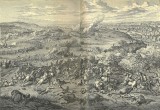
Battle of Blenheim 13.8.1704
The Battle of Höchstädt, better known in the English-speaking world as the Battle of Blenheim, is one of the most important battles of the War of the Spanish Succession. It took place on 13 August 1704, after the forces of the Franco-Bavarian alliance had, through their hesitation, missed both the opportunity to invade the hereditary lands of the Austrian Habsburgs and the chance to crush the various fighting formations of the anti-French coalition, allowing their enemies to unite. The battle ended in a crushing defeat for the French and the control of Bavaria by the anti-French coalition.

Battle of Chattanooga, 1863
The Battle of Chattanooga, along with the Battles of Gettysburg and Vicksburg, was one of the pivotal moments during the Civil War when the tide turned in favor of the Union.

Battle of Falkirk, 22 July 1298
The Battle of Falkirk (Blàr na h-Eaglaise Brice in Gaelic), which took place on 22 July 1298, was one of the major battles in the First War of Scottish Independence. Led by King Edward I of England, the English army defeated the Scots, led by William Wallace. Shortly after the battle Wallace resigned as Guardian of Scotland.

Battle of Lake George
The Battle of Lake George was fought on 8 September 1755, in the north of the Province of New York. It was part of a campaign by the British to expel the French from North America, in the French and Indian War.
On one side were 1,584 French, Canadian, and Abenaki troops under the command of the Baron de Dieskau. On the other side were 2,682 colonial troops under William Johnson and 250 Mohawks led by noted war chief Hendrick Theyanoguin. The battle consisted of three separate phases and ended in victory for the British and their allies. After the battle, Johnson decided to build Fort William Henry in order to consolidate his gains.
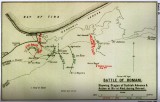
Battle of Romani, August 1916
The Battle of Romani was the last ground attack of the Central Powers on the Suez Canal at the beginning of the Sinai and Palestine campaign during the First World War. The battle was fought between 3 and 5 August 1916 near the Egyptian town of Romani and the site of ancient Pelusium on the Sinai Peninsula, 23 miles (37 km) east of the Suez Canal.

Battle of Saratoga, 1777
The Battles of Saratoga (September 19 and October 7, 1777) marked the climax of the Saratoga campaign, giving a decisive victory to the Americans over the British in the American Revolutionary War.

Boulton Paul Balliol, Sea Balliol
The Balliol entered service with the RAF during 1950 and proved to be a relatively trouble-free trainer. However, a shift in attitudes towards turbojet-powered trainer aircraft would see orders being curtailed for the type by 1952. Despite this, a navalised version of the aircraft, the Sea Balliol, was also introduced for deck landing training. The type also saw some use in other capacities, such as for experimental flights. Only a single export customer, the Royal Ceylon Air Force, would procure the type.

Caproni bombers during World War I
Italy was quick to appreciate the value of bombing attacks on enemy targets. Its big three-engined, twin-tailboom Capronis were among the finest bombers of World War I.

Captain Charles Hazlitt Upham, VC and Bar
New Zealand soldier who was awarded the Victoria Cross (VC) twice during the Second World War - for gallantry in Crete in May 1941, and in Egypt, in July 1942. He was the most recent of only three people to receive the VC twice, the only one to receive two VCs during the Second World War and the only combat soldier to receive the award twice. As a result, Upham is often described as the most highly decorated Commonwealth soldier of that war, as the VC is the Commonwealth's highest award for gallantry in the face of the enemy.

Coastal patrol boats in Southeast Asia
Offshore patrol vessels are being adapted for longer range patrols with a range of weapons to suit growing mission profiles.
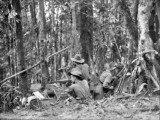
Commando raid on Salamaua, June 1942
The Raid on Salamaua was a conducted by Australian commandoes during the New Guinea campaign of World War II on 28 June 1942. It has been called the first offensive action on land against the Japanese in World War II. The raid was undertaken by 2/5th Independent Company under the command of Captain Norman Winning. According to one account, "The raid has been acclaimed as a copybook action for its diligent scouting, meticulous planning and audacious, multi-pronged attack against an enemy force 10 times the attackers' strength. All without loss of life."

Curtiss Hawk H75 in the French Air Force (December 1938 - June 1940)
The Curtiss P-36 Hawk, also known as the Curtiss Hawk Model 75, is an American-designed and built fighter aircraft of the 1930s and 40s. A contemporary of the Hawker Hurricane and Messerschmitt Bf 109, it was one of the first of a new generation of combat aircraft — a sleek monoplane design with a retractable undercarriage making extensive use of metal in its construction.
Perhaps best known as the predecessor of the Curtiss P-40 Warhawk, the P-36 saw little combat with the United States Army Air Forces during World War II. It was the fighter used most extensively and successfully by the French Air Force during the Battle of France.

Curtiss Hawk H75 in Vichy France and Free French (June 1940 - July 1949)
After the retreat of the British from the continent, the Wehrmacht occupied northern France and the Luftwaffe took over the skies. Some French air units evacuated south. Many French pilots believed that West Africa would become a base from which to fight against German-occupied territories. But this hope was soon buried. Virtually all the army commanders in Africa recognized the terms of the armistice, and the airmen calmly awaited further developments. Opposition began to form in some units. French pilots began to think of fleeing to the British with their weapons.

Curtiss Mohawk in South African Air Force (SAAF)
From mid-1940, some P-36s en route for France and the Netherlands were diverted to Allied air forces in other parts of the world. The Hawks ordered by the Netherlands were diverted to the Dutch East Indies and later saw action against Japanese forces. French orders were taken up by British Commonwealth air forces, and saw combat with the South African Air Force (SAAF) against Italian forces in East Africa, and with the RAF over Burma. Within the Commonwealth, the type was usually referred to as the Curtiss Mohawk.

Douglas XA-2
The Douglas XA-2 was an American prototype attack aircraft converted from a Douglas O-2 observation aircraft in the spring of 1926 by Douglas Aircraft. Only one prototype aircraft was built and the type was not ordered into production.
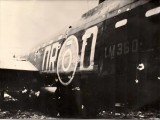
Flight Lieutnant William Reid VC
Scottish recipient of the Victoria Cross, the highest and most prestigious award for gallantry in the face of the enemy that can be awarded to British and Commonwealth forces. He earned his Victoria Cross as a pilot in the Royal Air Force Bomber Command during the Second World War.

French Vice-Admiral Charles DEstaing's battles with the British in the Caribbean, 1778-79
In one of those ironic paradoxes of history, the French Vice Admiral Count Charles Henri Hector d'Estaing, who led the first French fleet to North America in 1778 to aid the Americans during their rebellion against the British Crown, never met George Washington. When Major General John Hancock presented d'Estaing with a portrait of Washington while the French fleet was undergoing repairs in Boston in the fall of 1778, the French admiral hung it in the cabin of his flagship, the 80-gun Languedoc.
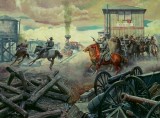
Grierson's Raid
Grierson's Raid was a Union cavalry raid during the Vicksburg Campaign of the American Civil War. It ran from April 17 to May 2, 1863, as a diversion from Maj. Gen. Ulysses S. Grant's main attack plan on Vicksburg, Mississippi.

Group Captain Lord Leonard Cheshire VC OM DSO and two Bars DFC and Bar
Highly decorated Royal Air Force (RAF) pilot and group captain during the Second World War, and a philanthropist. Among the honours Cheshire received as a pilot was the Victoria Cross, the highest award for gallantry in the face of the enemy that can be awarded to British and Commonwealth forces. He was the youngest group captain in the RAF and one of the most highly decorated pilots of the war.
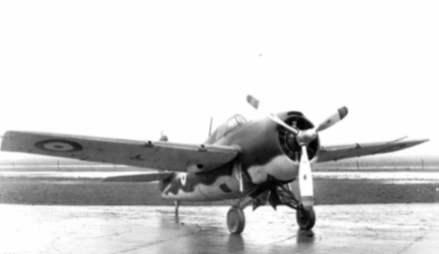
Grumman F4F Wildcat (Martlet) in the Fleet Air Arm
The Grumman F4F Wildcat is an American carrier-based fighter aircraft that entered service in 1940 with the United States Navy, and the British Royal Navy where it was initially known as the Martlet. First used by the British in the North Atlantic, the Wildcat was the only effective fighter available to the United States Navy and Marine Corps in the Pacific Theater during the early part of the Second World War.

Grumman Goose
The Grumman G-21 Goose is an amphibious flying boat designed by Grumman to serve as an eight-seat "commuter" aircraft for businessmen in the Long Island area. The Goose was Grumman's first monoplane to fly, its first twin-engined aircraft, and its first aircraft to enter commercial airline service. During World War II, the Goose became an effective transport for the US military (including the United States Coast Guard), as well as serving with many other air forces. During hostilities, the Goose took on an increasing number of combat and training roles.

Hawker Hurricane, tank busters of the 6th RAF Squadron
Mk IIs were used in ground support, where it was quickly learned that destroying German tanks was difficult; the cannons did not have the performance needed, while bombing the tanks was almost impossible. The solution was to equip the aircraft with a 40 mm cannon in a pod under each wing, reducing the other armament to a single Browning in each wing loaded with tracers for aiming purposes. The Hurricanes No. 6 Squadron, the first squadron equipped with this armament, were so effective that the squadron was nicknamed the "Flying Can Openers". A winged can-opener became an unofficial squadron emblem, and is painted on present-day aircraft of 6 Squadron.
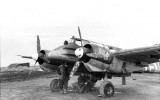
Henschel Hs 129 - operational deployment
At first glance, it might seem that the Hs 129 was an ideal choice for ground attacks. It had two engines, a heavily armored cockpit and the most powerful forward-firing cannon, which was mounted on mass-produced aircraft during World War II. The reinforced cockpit reliably protected the pilot from small arms fire. The German Luftwaffe planned to include him as its ultimate assassin, which will be very effectively deployed against Soviet T-34 type tanks.
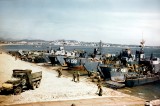
Landing of the 36th Infantry Division in southern France
A Texas outfit, the 36th Infantry Division landed in southern France and fought a confused battle with the Germans around Montelimar.
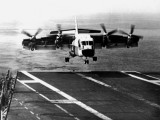
Ling-Temco-Vought (LTV) XC-142
The Ling-Temco-Vought (LTV) XC-142 was a tri-service (U.S. Army, U.S. Air Force and U.S. Navy) tiltwing experimental aircraft designed to investigate the operational suitability of vertical/short takeoff and landing (V/STOL) transports. An XC-142A first flew conventionally on 29 September 1964, and on 11 January 1965, it completed its first transitional flight by taking off vertically, changing to forward flight and finally landing vertically. Its service sponsors pulled out of the program one by one, and it eventually ended due to a lack of interest after demonstrating its capabilities successfully.

Lockheed Ventura in the Commonwealth Air Force
The Lockheed Ventura is a twin-engine medium bomber and patrol bomber of World War II. The Ventura first entered combat in Europe as a bomber with the RAF in late 1942. Designated PV-1 by the United States Navy (US Navy), it entered combat in 1943 in the Pacific. The bomber was also used by the United States Army Air Forces (USAAF), which designated it the Lockheed B-34 (Lexington) and B-37 as a trainer. British Commonwealth forces also used it in several guises, including antishipping and antisubmarine search and attack.

Mediterranean Thunderbolts
The P-47 Thunderbolt, originally designed as a high-altitude interceptor, became the principal US fighter-bomber of World War II. First adapted to the ground attack role by units of the Twelfth Air Force in early 1944, the strength and durability of the P-47 airframe, along with its massive size, earned it the nickname 'Juggernaut', which was quickly shortened to 'Jug' throughout the MTO and ETO. By October 1943, with the creation of the Fifteenth Air Force, nearly half of the Twelfth's fighter groups would be retasked with strategic escort missions, leaving six groups to perform close air support and interdiction missions throughout the entire Mediterranean theatre.

No. 333 (Norwegian) Squadron RAF
No.333 (Norwegian) Squadron was a maritime patrol and special duties squadron that ended the war operating with the Banff strike wing. The squadron was formed from No.1477 Flight, a formation already manned by Norwegians, on 10 May 1943. From the start it operated a mix of Mosquitoes and Catalinas. The Mosquitoes were used for reconnaissance flights along the Norwegian coast, while the Catalinas flew patrols off the north coast of Scotland. The squadron had a second role flying agents and supplies to the Norwegian resistance.

North American B-25 Mitchell combat deployment in the Pacific (1): 5th Air Force 1942-1943
Most B-25s in American service were used in the war against Japan in Asia and the Pacific. The Mitchell fought from the Northern Pacific to the South Pacific and the Far East. These areas included the campaigns in the Aleutian Islands, Papua New Guinea, the Solomon Islands, New Britain, China, Burma and the island hopping campaign in the Central Pacific, as well as in the Doolittle Raid. The aircraft's potential as a ground-attack aircraft emerged during the Pacific war. The jungle environment reduced the usefulness of medium-level bombing, and made low-level attack the best tactic. Using similar mast height level tactics and skip bombing, the B-25 proved itself to be a capable anti-shipping weapon and sank many enemy sea vessels. An ever-increasing number of forward firing guns made the B-25 a formidable strafing aircraft for island warfare.

Northrop N-3PB at No. 330 (Norwegian) Squadron
The Northrop N-3PB Nomad was a single-engined American floatplane of the 1940s. Northrop developed the N-3PB as an export model based on the earlier Northrop A-17 design. A total of 24 were purchased by Norway, but were not delivered until after the Fall of Norway during the Second World War. Exiled Norwegian forces used them from 1941, operating from Iceland, for convoy escort, anti-submarine patrols, and training purposes from "Little Norway" in Canada. Within two years of delivery, the design was obsolete for front-line service and the remaining N-3PBs were replaced by larger aircraft in 1943.

Northrop YA-9A
Prototype attack aircraft developed for the United States Air Force A-X program. The YA-9 was passed over in preference for the Fairchild Republic YA-10 that entered production as the A-10 Thunderbolt II.
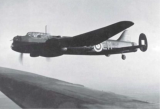
Operational deployment of Avro Manchester during the war
The Avro Manchester was a British twin-engine heavy bomber developed and manufactured by the Avro aircraft company in the United Kingdom. While not being built in great numbers, it was the forerunner of the famed and vastly more successful four-engined Avro Lancaster, which was one of the most capable strategic bombers of the Second World War.
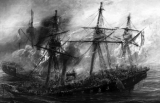
Pacific War 1879-83
The Pacific War, in which Chile fought Peru and Bolivia, was the largest military conflict fought in the Andes and decided the fate of the peoples of Latin America. This war was also known as the "Saltpeter War" because the main reason was to fight for these raw materials.

Royal Navy Trawlers during World War II
The naval trawler is a concept for expeditiously converting a nation's fishing boats and fishermen to military assets. England used trawlers to maintain control of seaward approaches to major harbors. No one knew these waters as well as local fishermen, and the trawler was the ship type these fishermen understood and could operate effectively without further instruction. The Royal Navy maintained a small inventory of trawlers in peacetime, but requisitioned much larger numbers of civilian trawlers in wartime. The larger and newer trawlers and whalers were converted for antisubmarine use and the older and smaller trawlers were converted to minesweepers.

Self-propelled gun 40M Nimród
The 40M Nimród was a World War II Hungarian self-propelled anti-aircraft gun based on a license-built copy of the Swedish Landsverk L-62 Anti I SPAAG but with a new turret, and developed independently. Originally, it was intended to be used both in the anti-aircraft and tank destroyer roles, but it proved to be ineffective against Soviet tanks like the KV-1 tank. Therefore, it was primarily utilized against lightly armored vehicles and for air defense.

SS-Obergruppenführer Arthur Seyss-Inquart
Arthur Seyss-Inquart (Seyß-Inquart) was an Austrian Nazi politician who served as Chancellor of Austria in 1938 for two days before the Anschluss. His positions in Nazi Germany included "deputy governor to Hans Frank in the General Government of Occupied Poland, and Reich commissioner for the German-occupied Netherlands" including shared responsibility "for the deportation of Dutch Jews and the shooting of hostages".
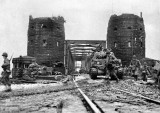
Taking the bridge at Remagen 1945
The Battle of Remagen was an 18-day battle during the Allied invasion of Germany in World War II from 7 to 25 March 1945 when American forces unexpectedly captured the Ludendorff Bridge over the Rhine intact. They were able to hold it against German opposition and build additional temporary crossings. The presence of a bridgehead across the Rhine advanced by three weeks the Western Allies' planned crossing of the Rhine into the German interior.

Vought RGM-6 Regulus I
The SSM-N-8A Regulus or the Regulus I was a United States Navy-developed ship-and-submarine-launched, nuclear-capable turbojet-powered second generation cruise missile, deployed from 1955 to 1964. Its development was an outgrowth of U.S. Navy tests conducted with the German V-1 missile at Naval Air Station Point Mugu in California.

Wekusta - Luftwaffe meteorological service
The basic pillars of war, strategy and tactics, inevitably depend on an uncontrollable factor: the weather. With the increasing sophistication of weather collection, analysis, and forecasting in the early 20th century, weather forecasting became an integral part of World War II. For Europe, the Arctic was the most important geographic area for data collection, from where stormy weather moved east and south. Important data from Arctic stations, extending from Greenland to the Siberian Sea via Svalbard and Franz Josef Land, were almost completely cut off after these stations were gradually occupied by the Allies. The British went one step further and broadcast false weather data to Germany. Germany had to start acting aggressively to win the data collection war.

Yakovlev Yak-45, Yak-47 (projects)
In the early 1970s the Soviet VVS expressed a desire to replace the MiG-21 with a more modern twin-engine fighter with greater air-superiority capabilities. Yakovlev's entry was a series of designs submitted under the designation Yak-45.
Join us
We believe that there are people with different interests and experiences who could contribute their knowledge and ideas. If you love military history and have experience in historical research, writing articles, editing text, moderating, creating images, graphics or videos, or simply have a desire to contribute to our unique system, you can join us and help us create content that will be interesting and beneficial to other readers.
Find out more